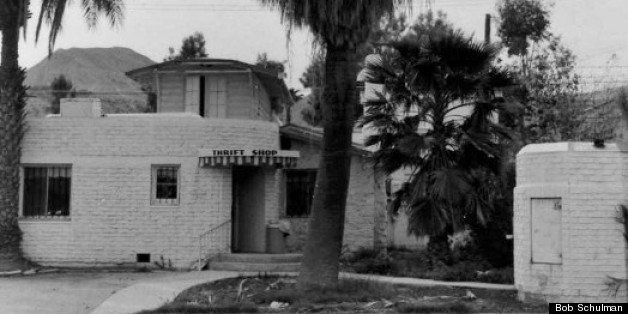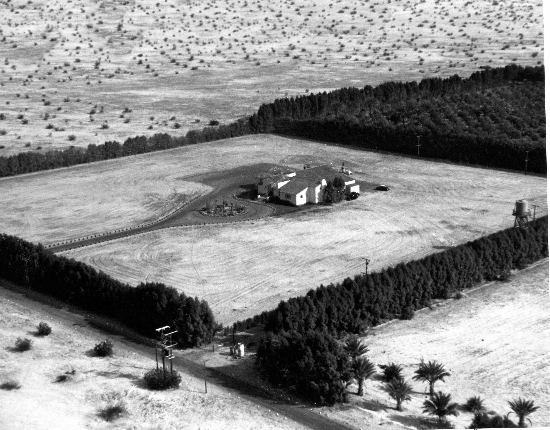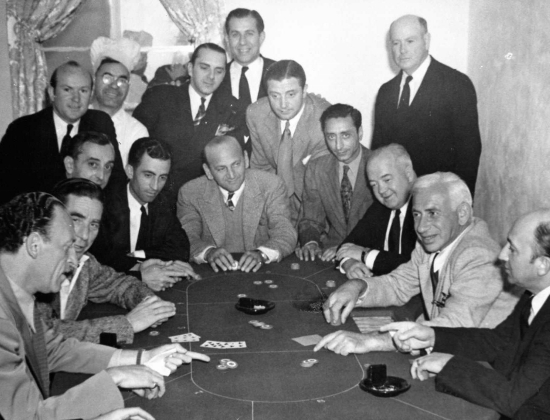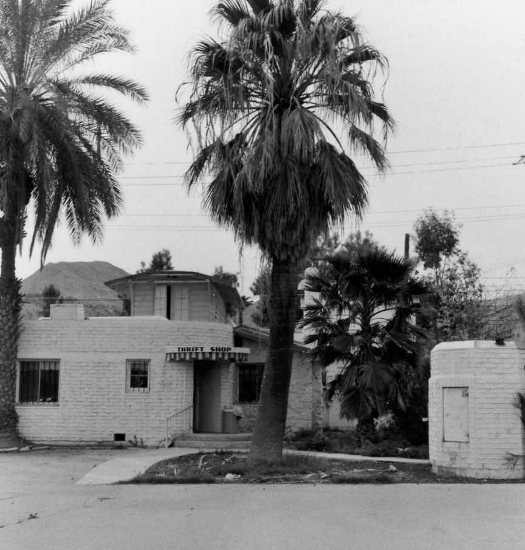
Dry air, year-round sunshine and healing mineral waters have been drawing the glitterati to Southern California's desert playland ever since the first hotel opened here in 1886.
Word soon got out that this spot -- called la palma de la mano de Dios (palm of God's hand) by the Cahuilla Indians' local Aqua Caliente Band - was a great place to bat little balls around, tan up at the pool and hoist some cold ones (and maybe dry out after hoisting too many).
In 1936, a reputed wiseguy from Detroit named Al Wertheimer added another big thing to do here: tossing dotted ivory cubes on green felt tables. Sure, it was illegal, but the country was in the Great Depression, and gambling could draw more visitors to the area, especially fun-loving movie stars, corporate moguls, railroad tycoons and oil barons. So local officials winked at Wertheimer's casino and gave it a hearty thumbs-up (as long as he put it in neighboring Cathedral City). And so what if Wertheimer used to belong to Detroit's notorious Purple Gang.

Al Wertheimer's Dunes Club, circa 1936. Photo courtesy of the Palm Springs Historical Society.
Two years later, what had morphed from la palma into "the Springs" incorporated to officially become Palm Springs -- although insiders continued to call it the Springs -- and Wertheimer's casino, the Dunes Club, was packed with elite rollers and shakers. It wasn't unusual to see the likes of Clark Gable, Carole Lombard, Errol Flynn, Humphrey Bogart, Marlene Dietrich, Robert Montgomery, the Ritz Brothers and studio exec Darryl Zanuck at the tables, wheels and slots of Wertheimer's posh, Spanish-style stucco palace.
Former Palm Springs Mayor Frank Bogert reportedly described the scene at the Dunes this way: "There was gambling every night, beautiful women and more money than you could shake a stick at. And the best thing was that there was never any trouble... no shootouts or any of that crap you see in the movies."

Photo from the Dunes Club showing Wertheimer (second from left) and friends. Photo courtesy of the Palm Springs Historical Society.
Some of the Springs' top hotels, it's said, had special phone lines to the Dunes so that guests could place bets on races at Santa Anita in Los Angeles and at the Aqueduct track in Queens, N.Y.
More Clubs Spring Up
Business was so good out in Cathedral City that two more gambling spots opened up there. One newcomer, the Cove Club, was built by Frank Portnoy, a chum of Wertheimer's. Considerably less classier than the Dunes, it was described as "a knockdown, gangsterish place" where customers first encountered "a panel in the door that slid open to reveal a disembodied pair of glaring eyes."
The other, Earl Sausser's 139 Club, was said to be "a honky-tonk sawdust joint." Here, patrons reportedly were first eyed by "a washed-out boxer cradling a Tommy gun in a guard turret." But what the 139 Club lacked in class, the place more than made up for it in the quality of its chili. What's more, the chili was free.

Guard turret (at right) protected the 139 Club, later turned into a thrift shop. Photo courtesy of the Palm Springs Historical Society.
Still another place owned by Wertheimer, the Colonial House, opened up right in Palm Springs. This one masqueraded as a "private hotel," but just about everyone in town knew there was a secret staircase hidden behind a cupboard in the pantry that led to an underground casino, bar and bawdy house.
As Palm Springs grew in the 30s and 40s, so did the gambling clubs. By the time Uncle Sam got into World War II, limos were showing up at the Springs' ritziest night clubs to shuttle customers to the casinos to try their luck at the tables -- and perhaps rub elbows with mobsters, moguls and movie stars.
End of an Era
What happened to the casinos? First to pass into history was the Dunes, which after a number of brushes with the law mysteriously burned down in 1943. The 139 Club (so-named because it debuted in 1939) managed to stay afloat until 1947, after which it became a thrift shop for the Humane Society. The Cove, opened in 1941, is said to have somehow stayed in business through the early 60s. The building later became an Elks Lodge.
Legal gaming (people in the business no longer say "gambling") came to the Springs around 1980 with the opening of the Fantasy Springs Casino Resort and Spa, promoted as the first U.S. casino on a Native American reservation. A half-dozen or so more casino-resorts have since popped up in the area, all on tribal lands in Palm Springs and in eight surrounding cities, collectively called Greater Palm Springs.
Besides rolling the cubes, a good number of the area's 5.1 million overnight visitors are still batting little balls around (on Greater Palm Springs' 110 golf courses and 600-plus tennis courts) and tanning up around the area's 50,000 swimming pools.

Celebs like New York Mayor Jimmy Walker, Albert Einstein and Mary Pickford enjoyed this hillside view at the Willows Inn in Palm Springs. Photo courtesy of the Willows.
The nine cities in the Greater Palm Springs area together offer some 210 hotels (including a little over 100 in Palm Springs) with a total of 15,200 rooms. Visitors can find everything from sprawling resort-hotels such as the 512-room Westin Mission Hills Golf Resort and Spa in Rancho Mirage to boutiques in Palm Springs like the 35-room Willows Historic Inn, once a favorite hideaway of New York's playboy mayor Jimmy Walker, Albert Einstein and film stars Shirley Temple, Marion Davies and Mary Pickford.
Al Wertheimer cashed in his last chips 60 years ago, but his memory is still on a roll in at least one popular spot in the Springs. His old-time Colonial House is still there, except after passing through several owners it's now a 58-room luxury boutique hotel, the Colony Palms. The casino and bawdy house are long gone, but a featured attraction on the three-acre property is the Purple Palm Restaurant -- billed as "a tip of the hat" to Wertheimer's infamous Purple Gang.